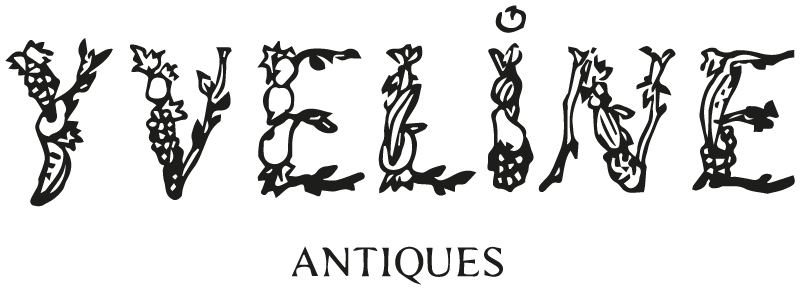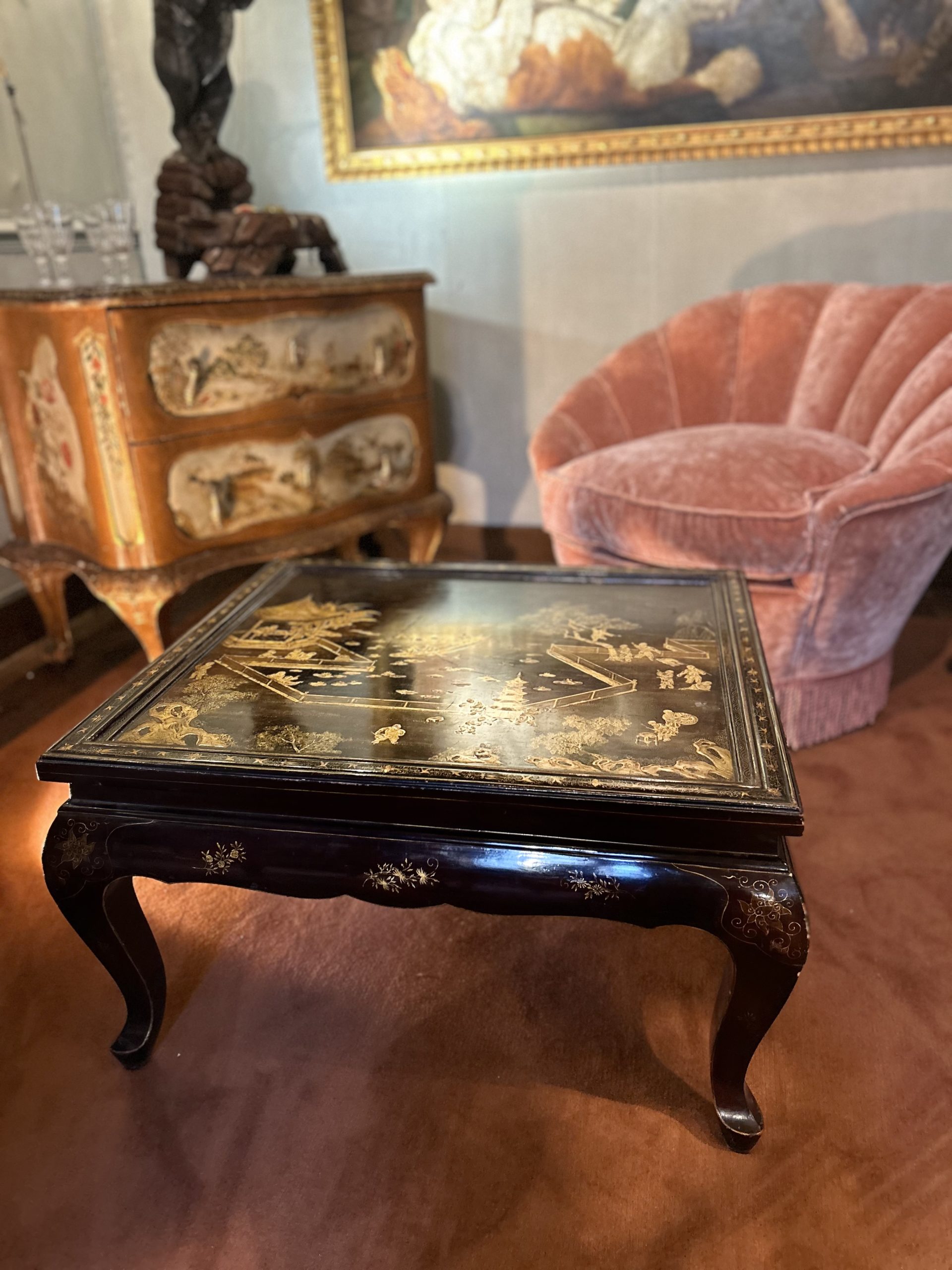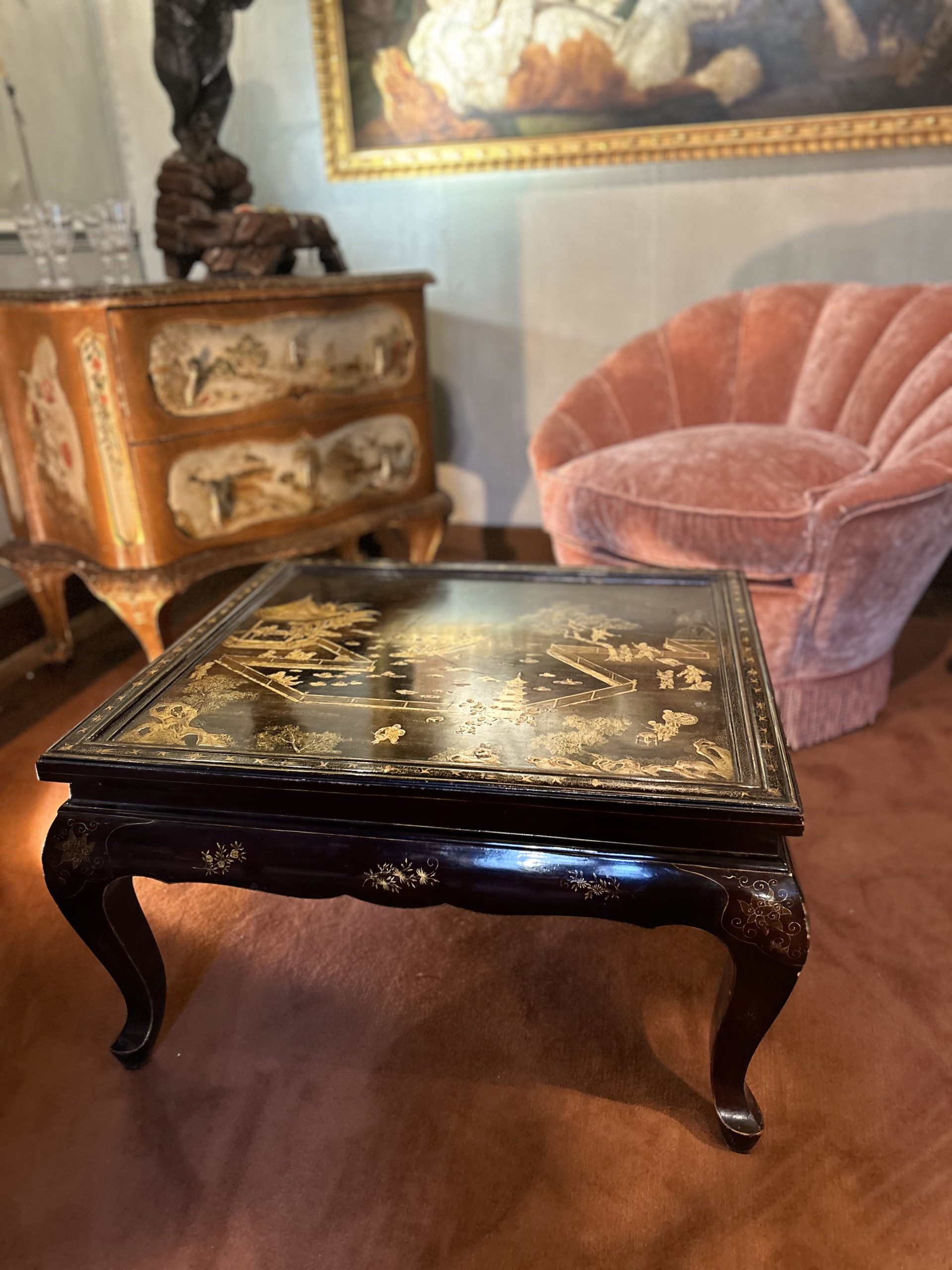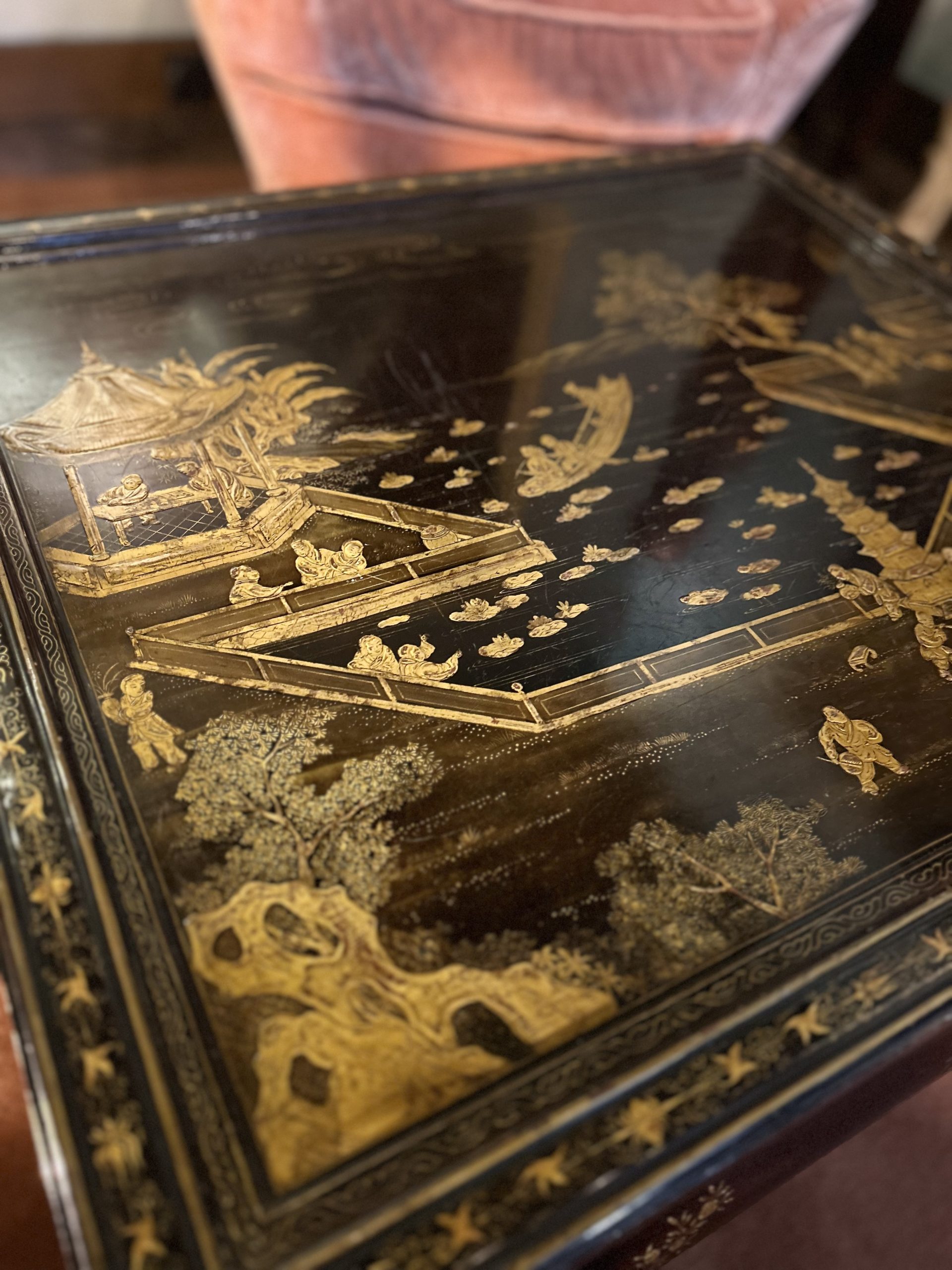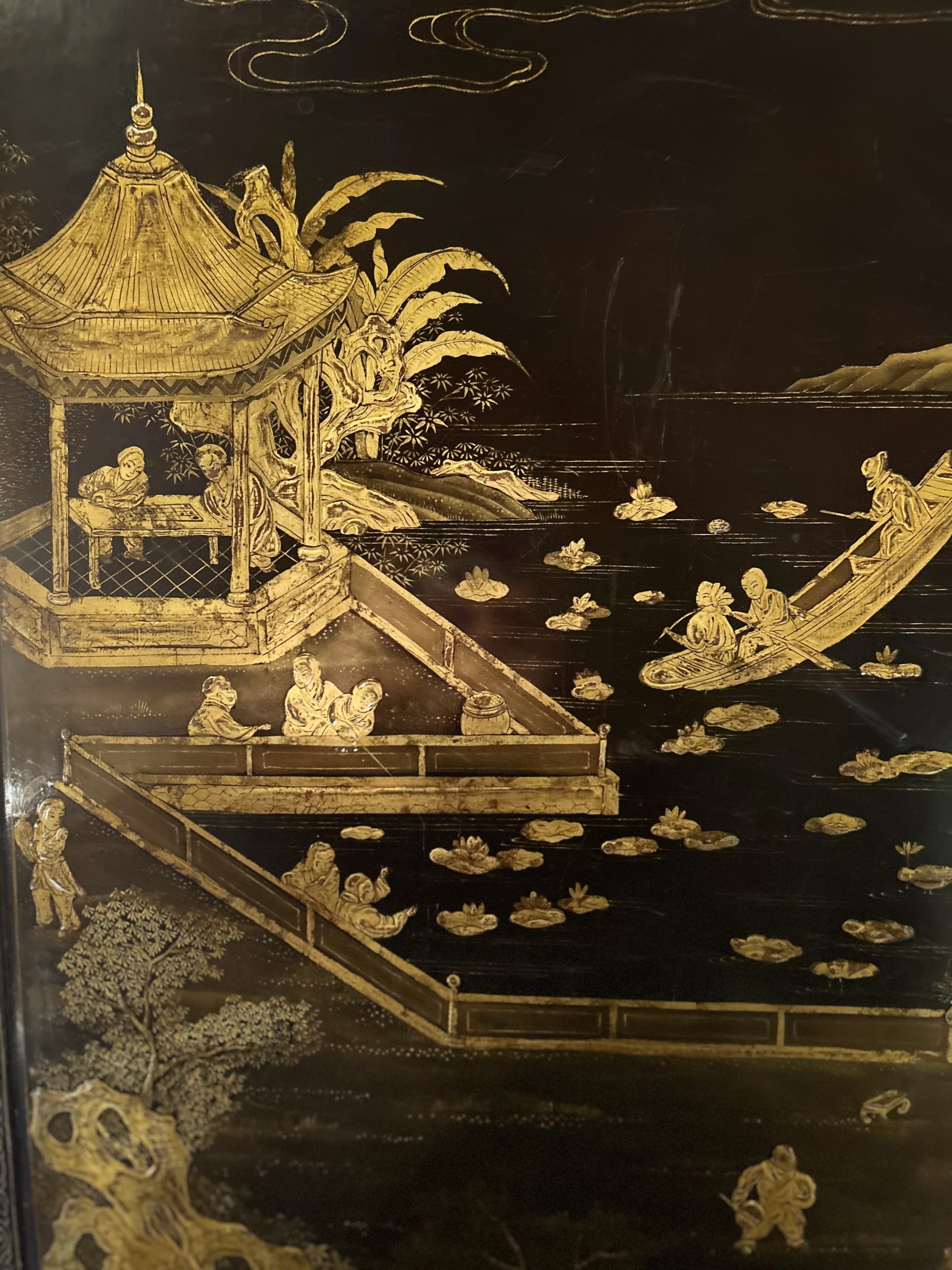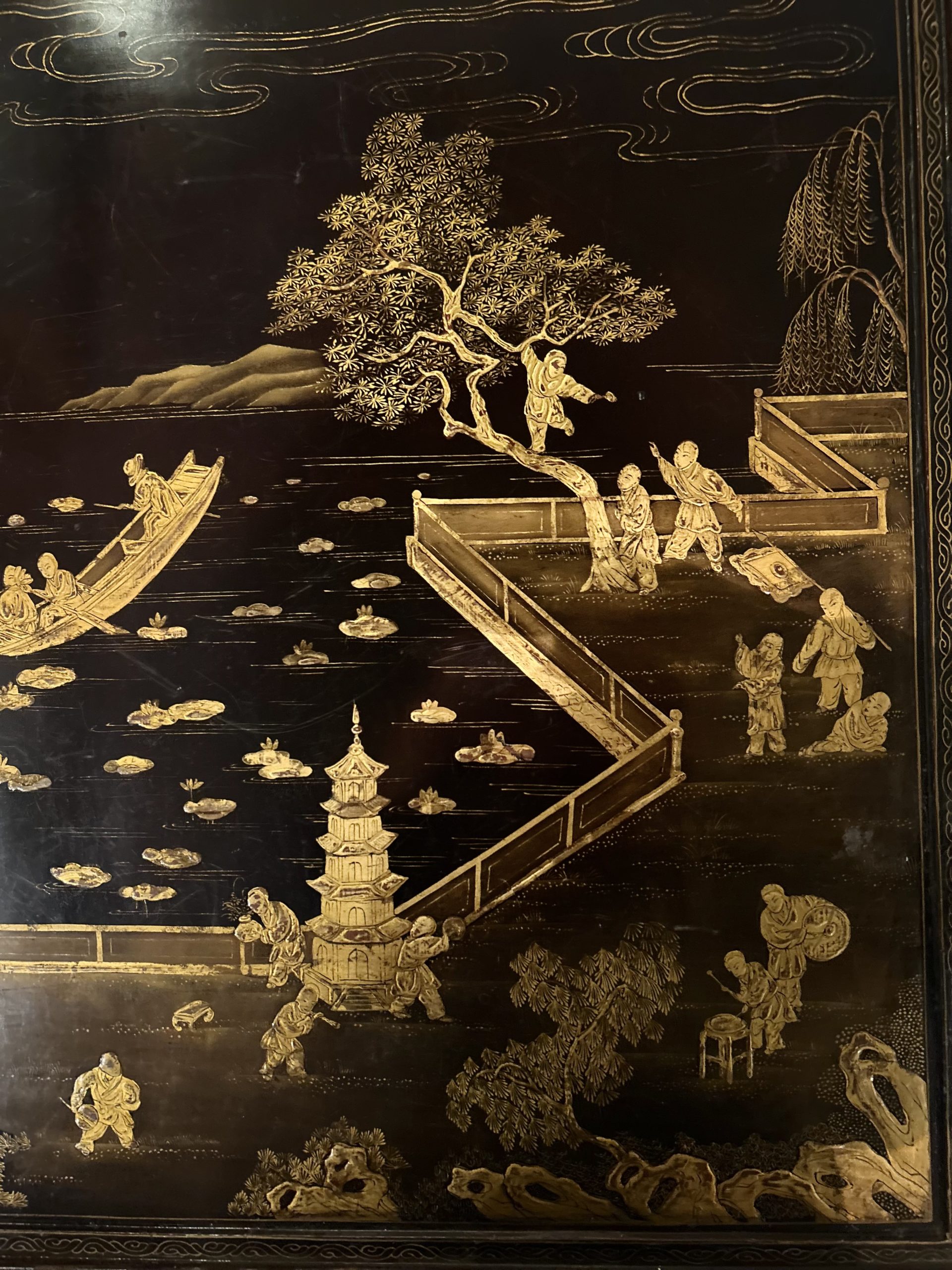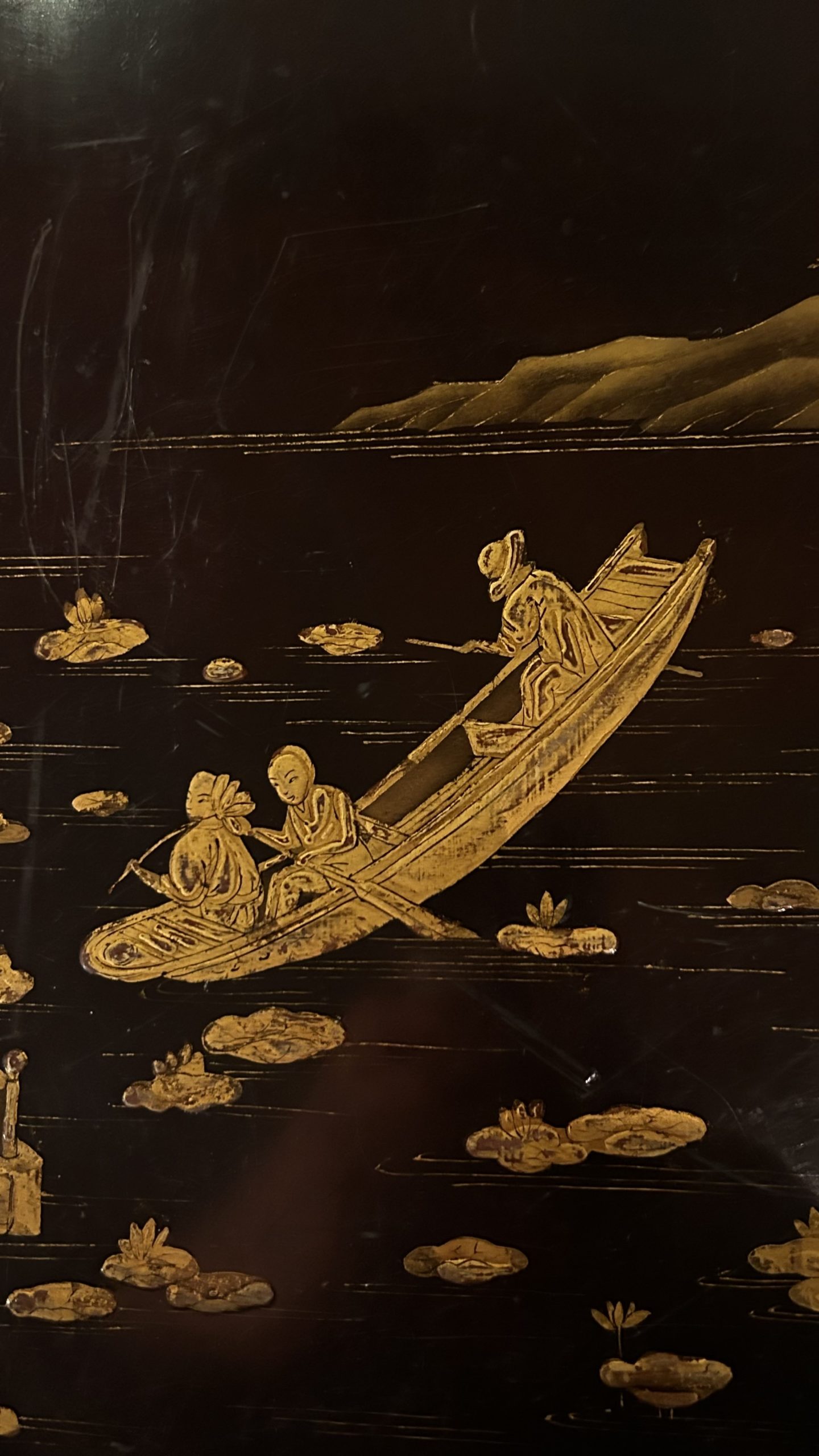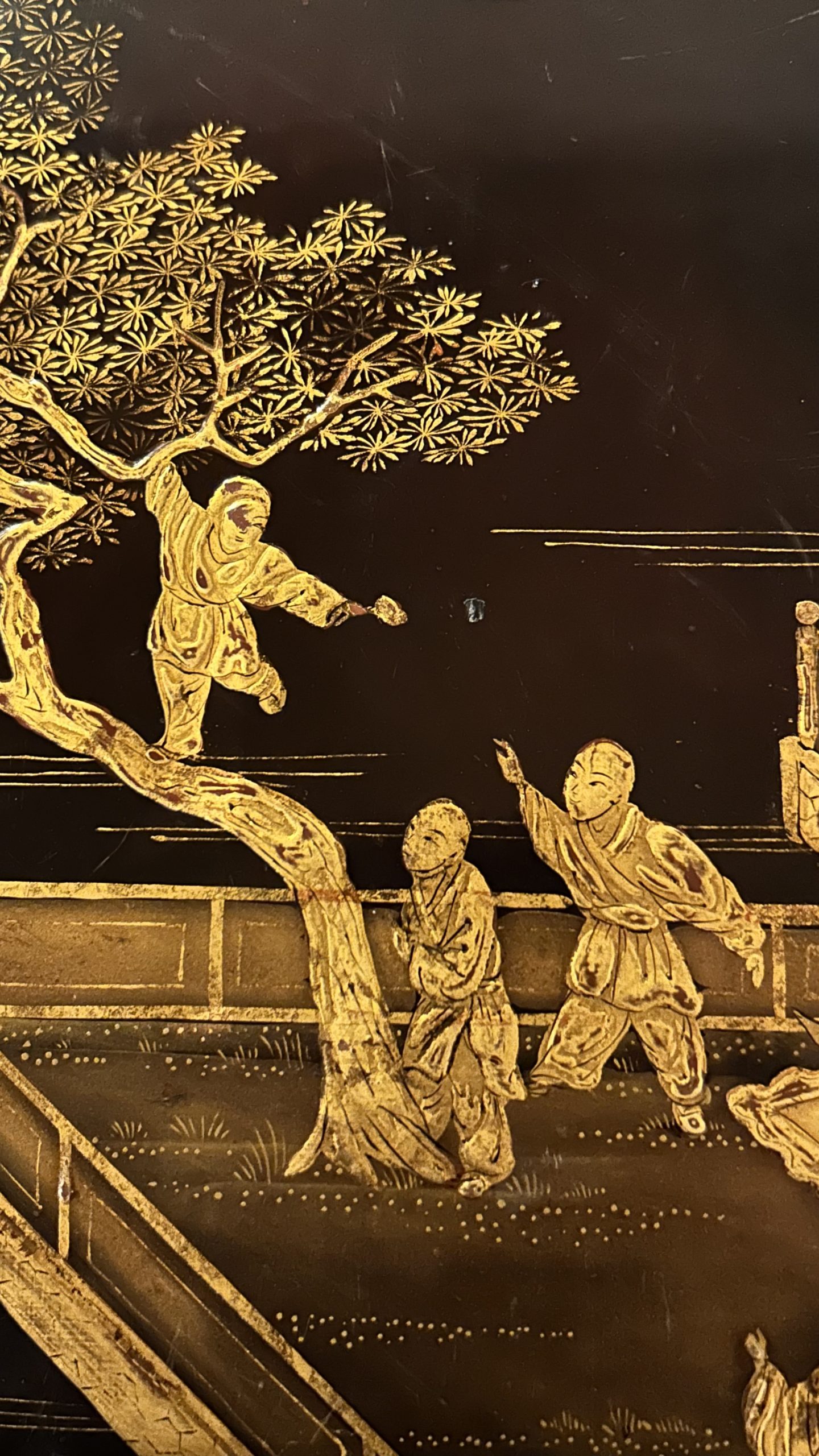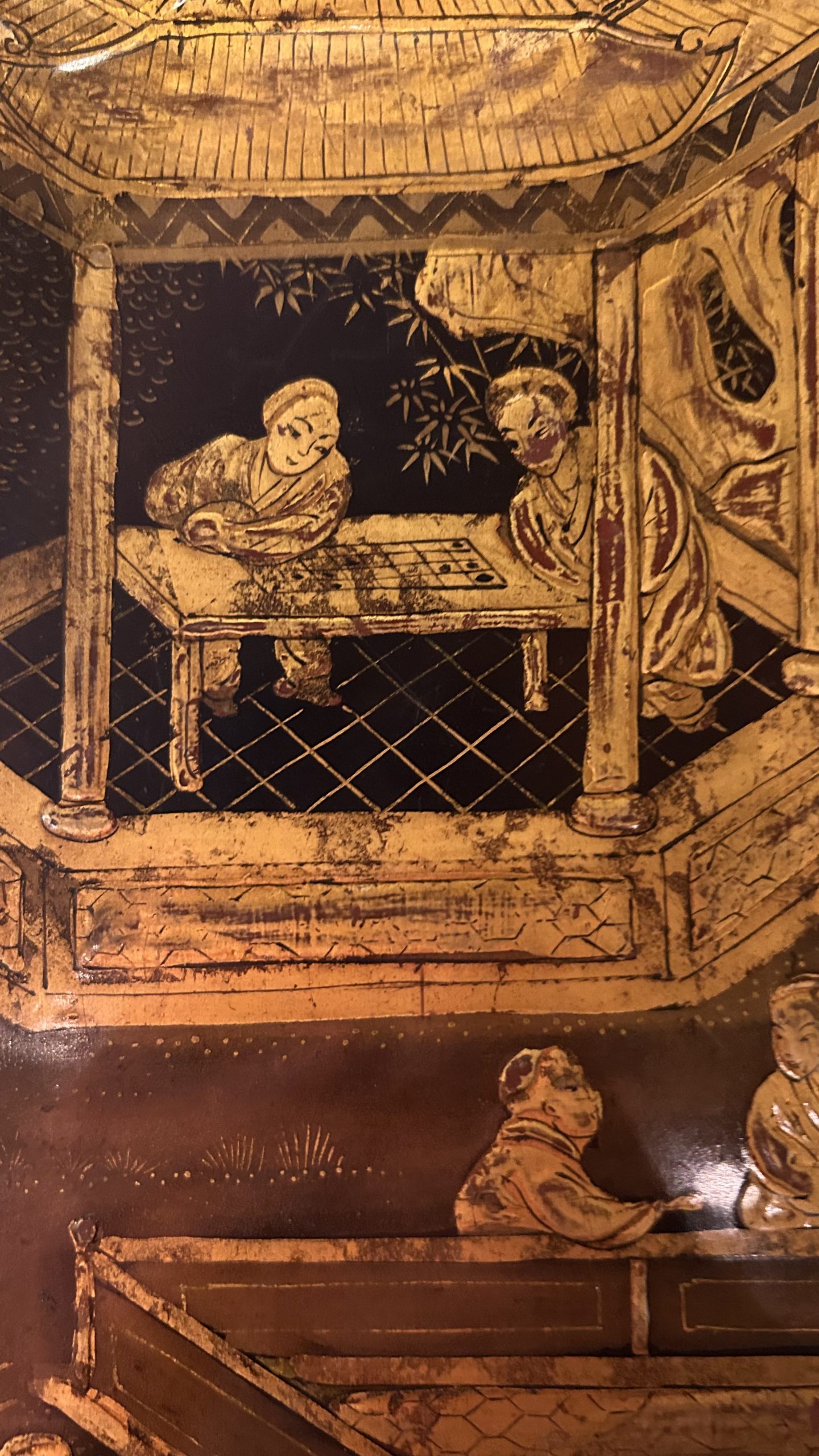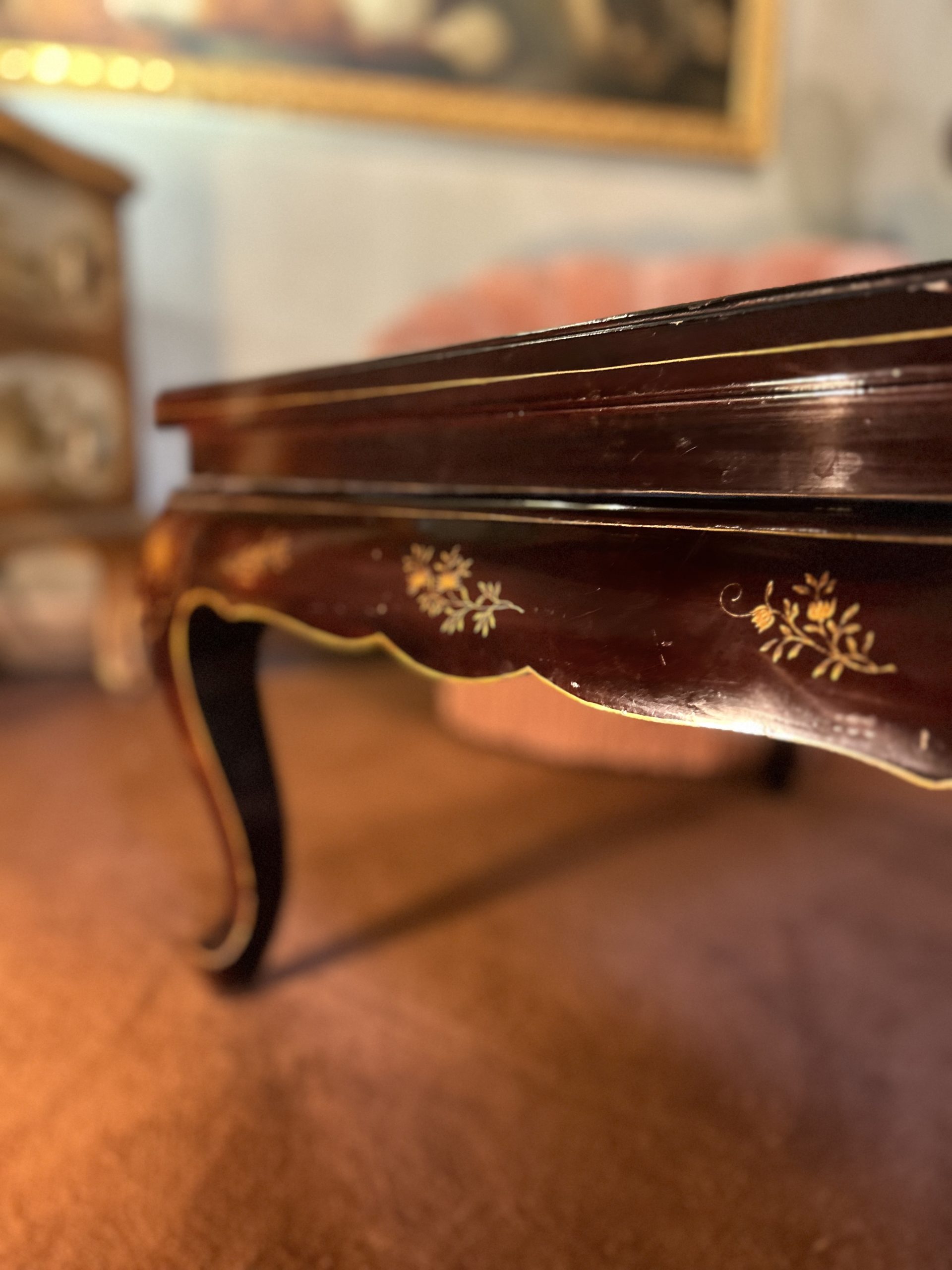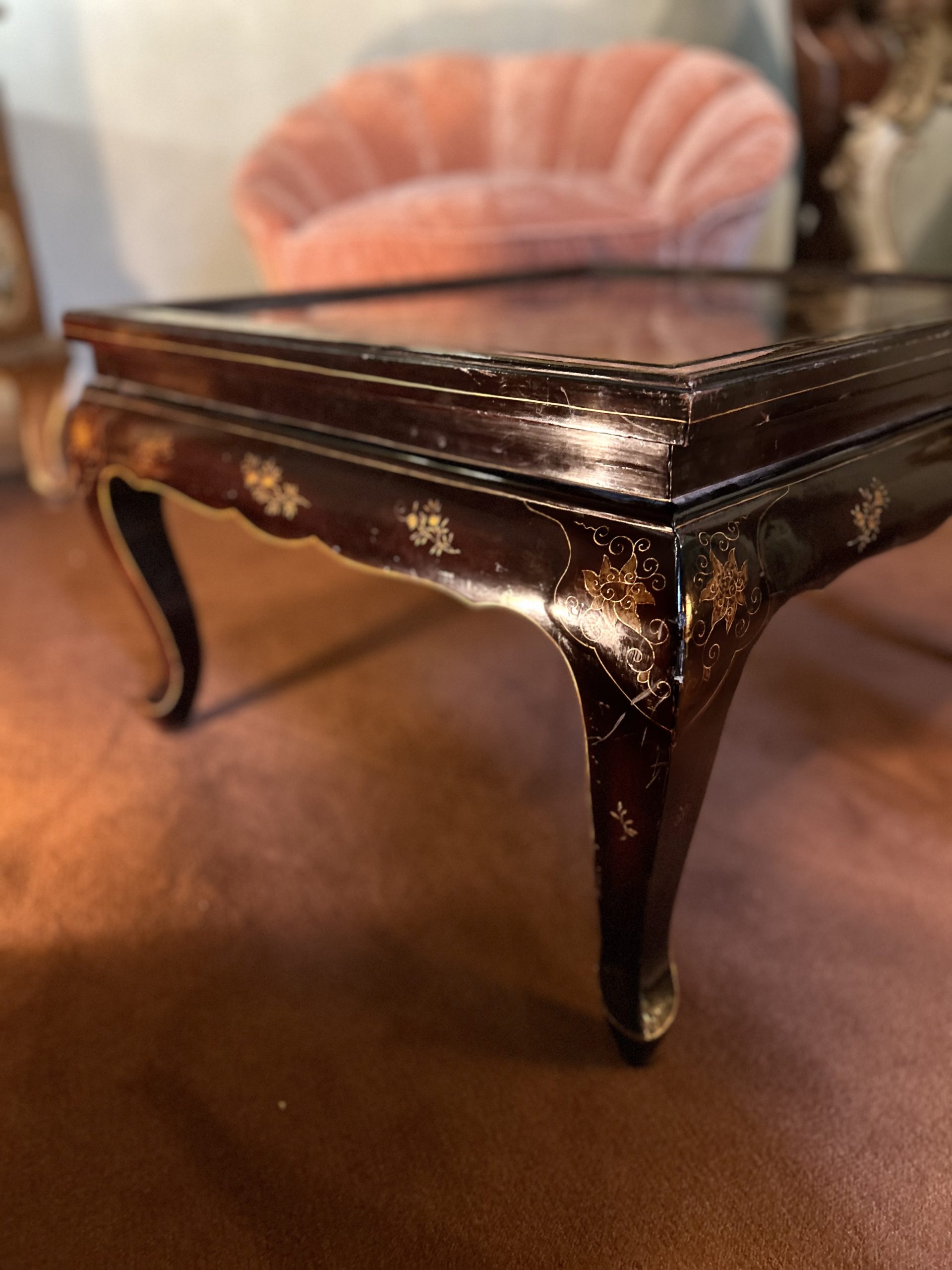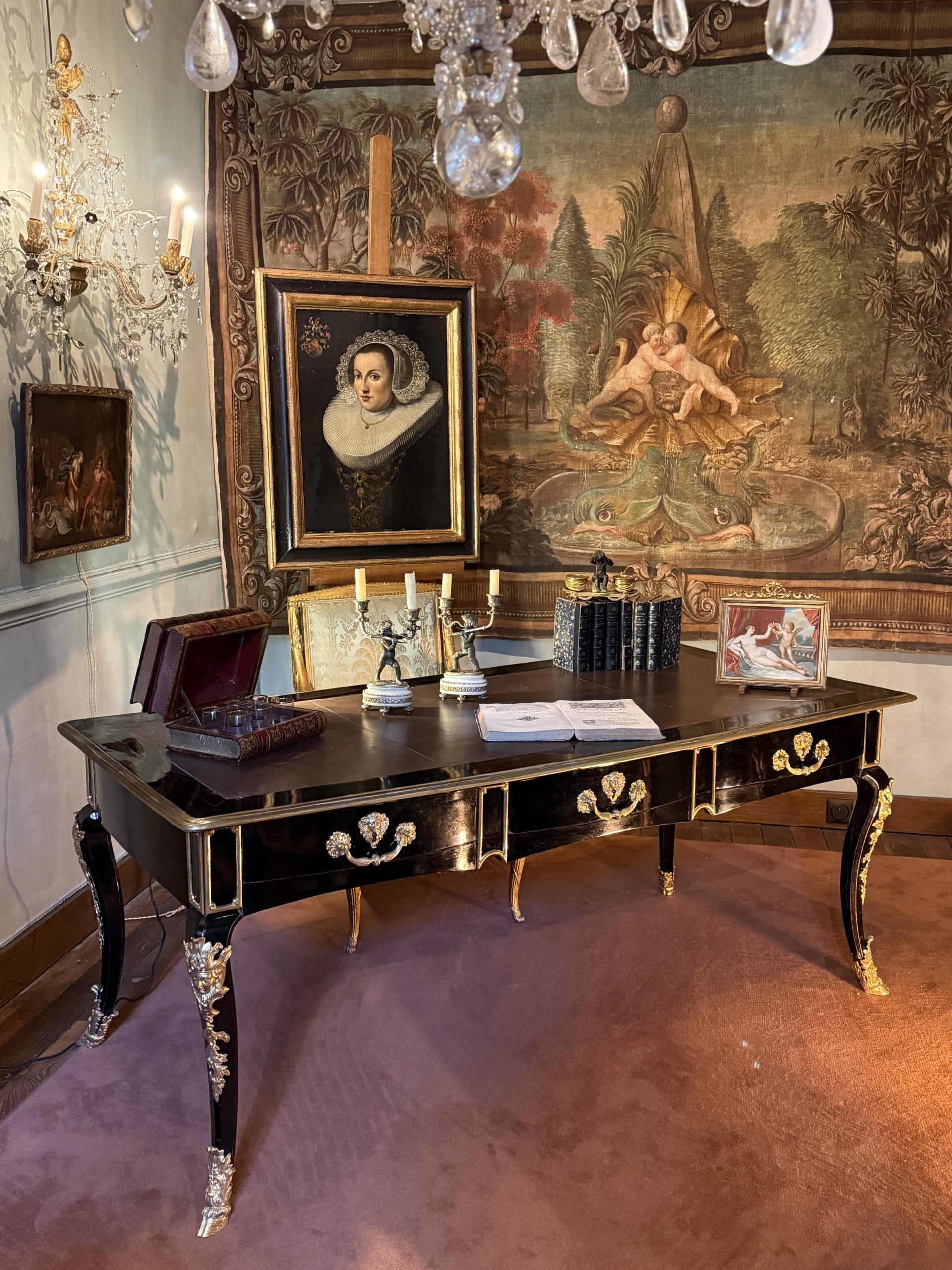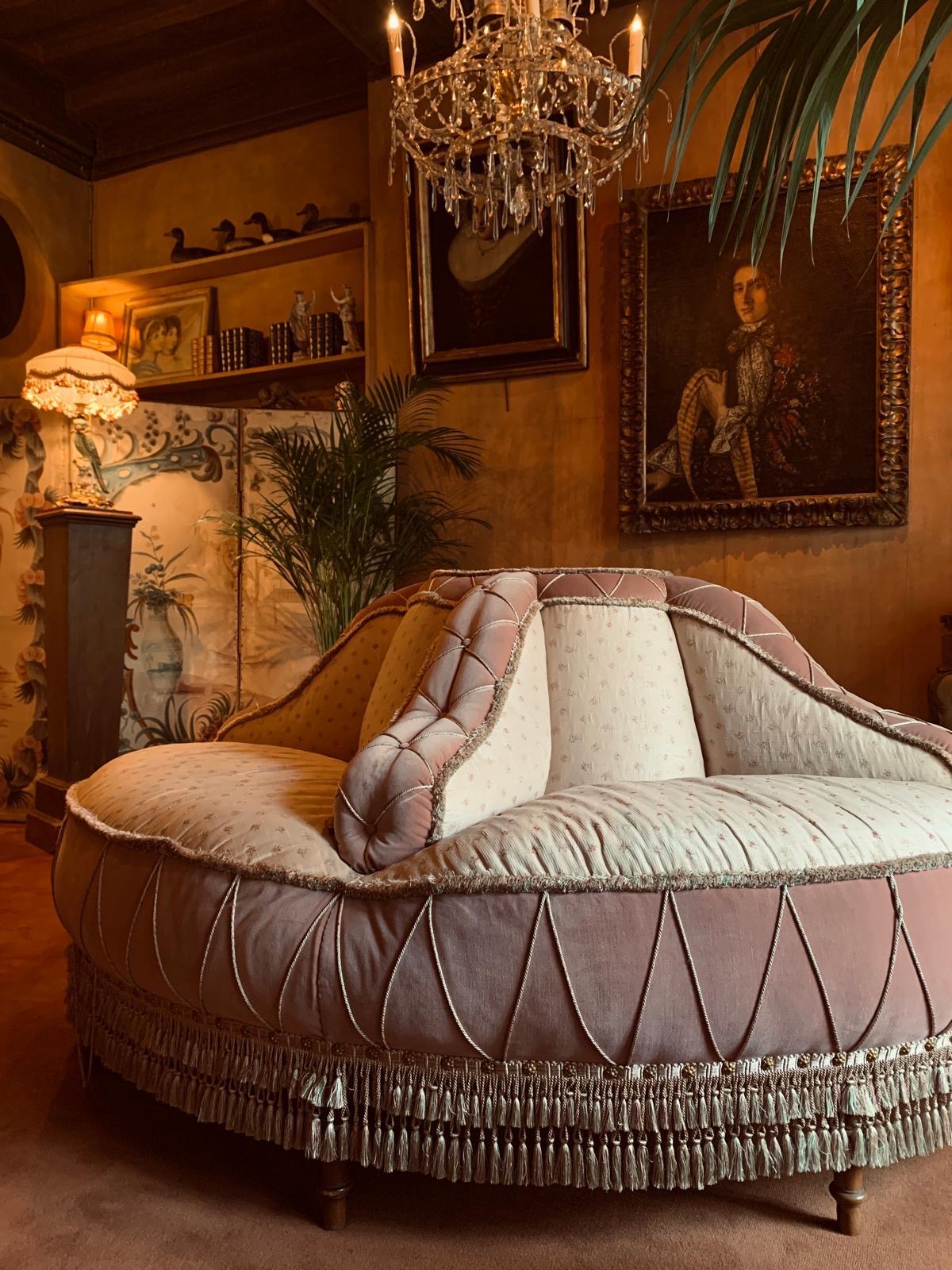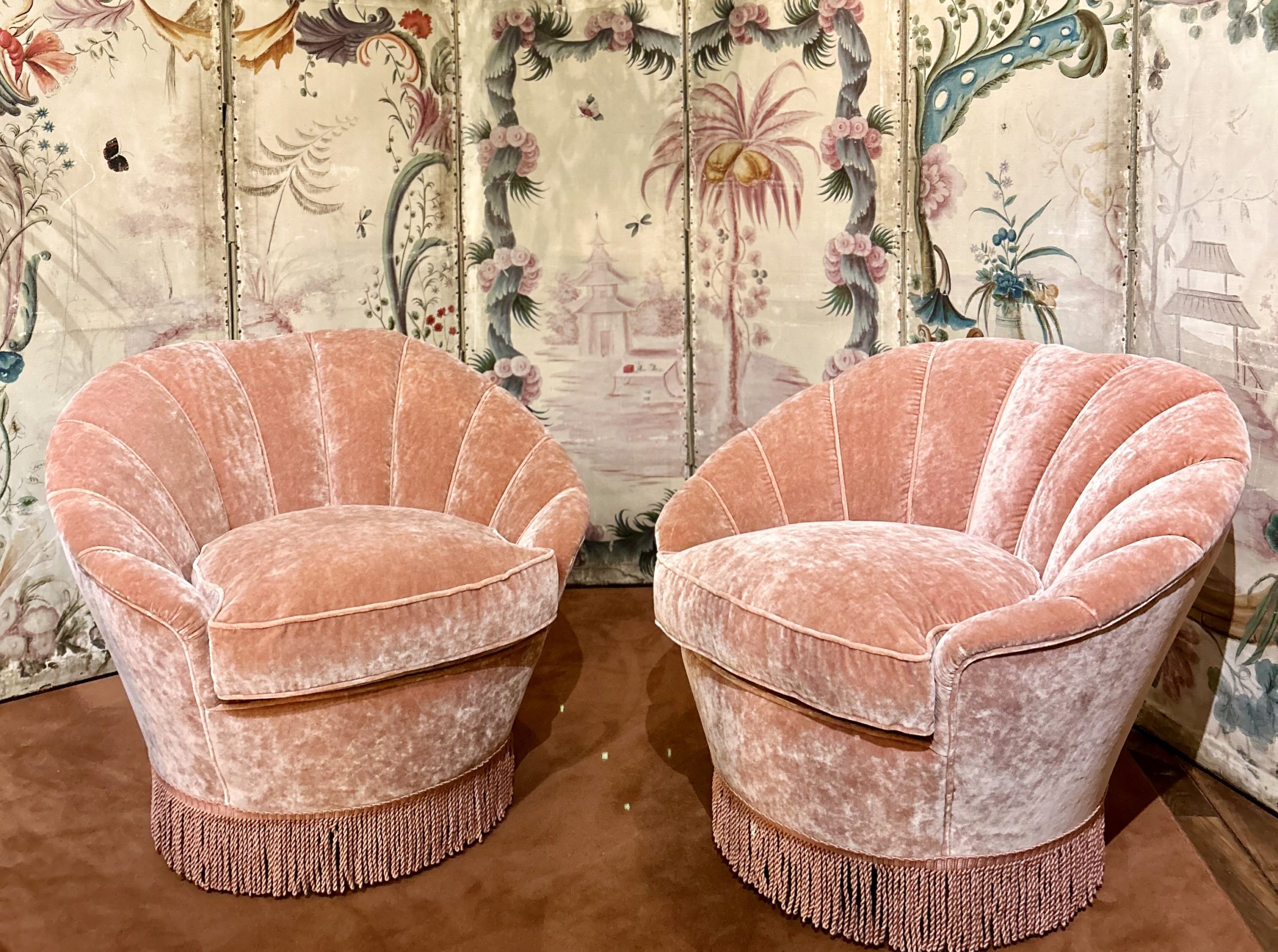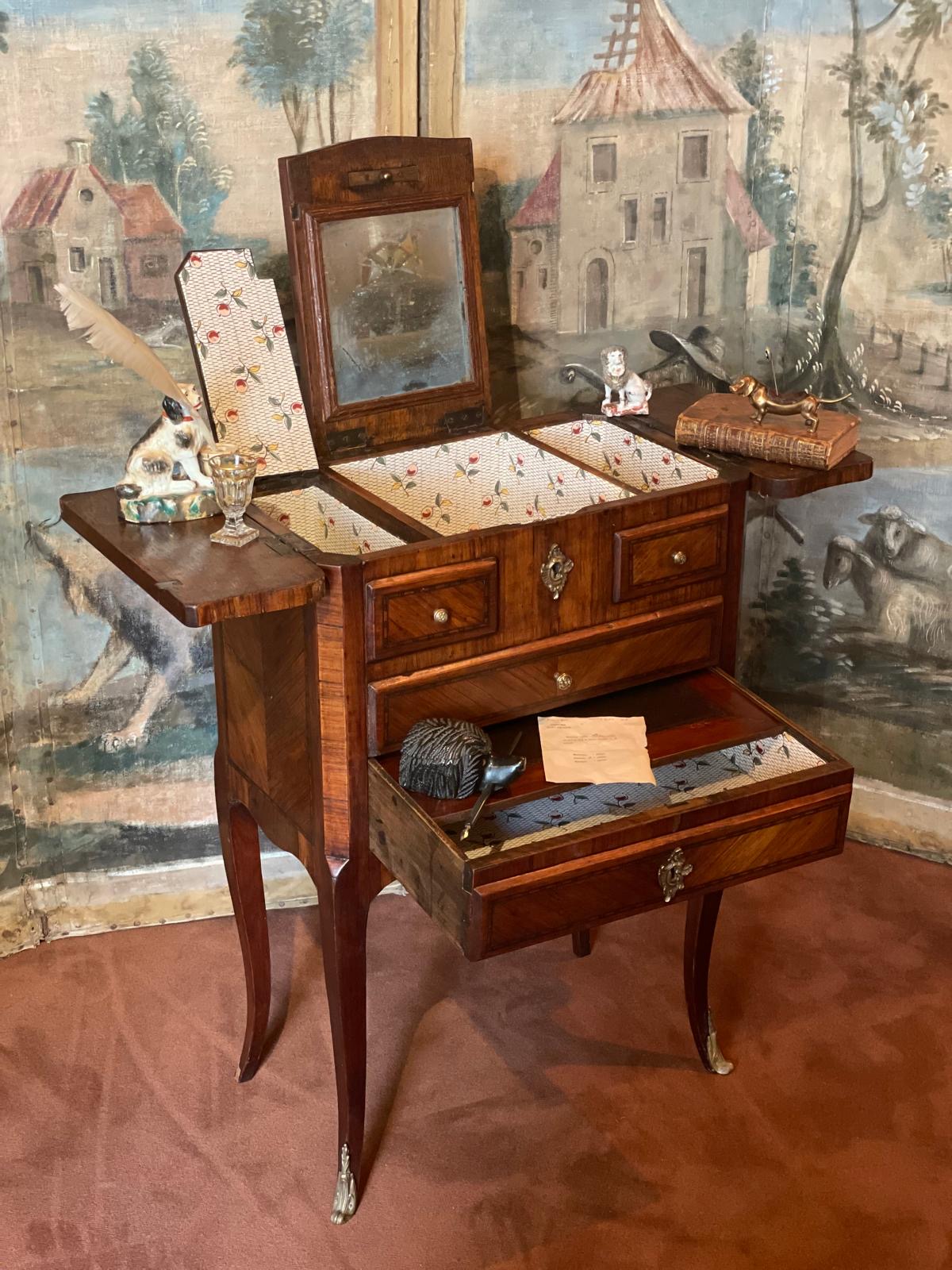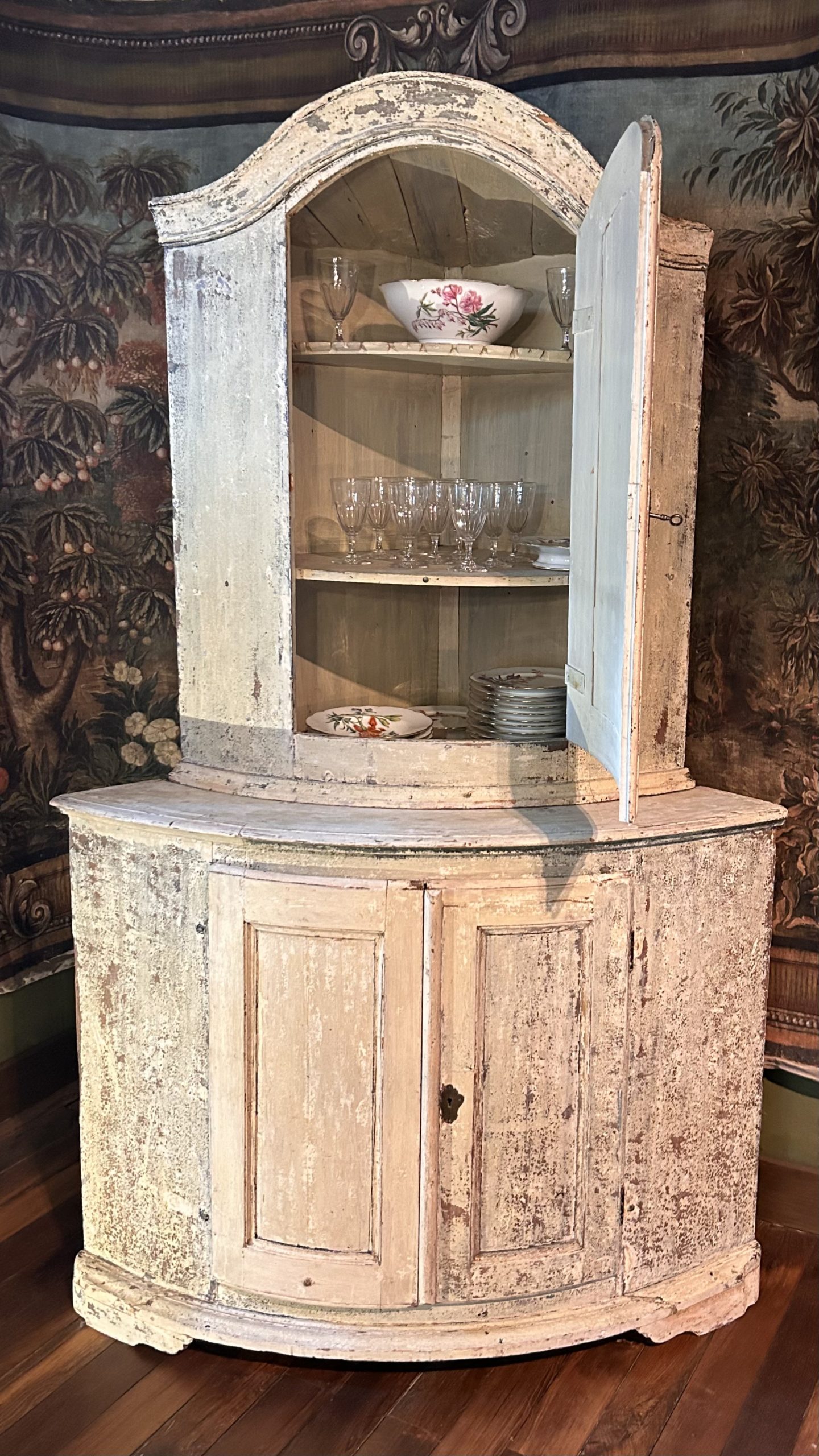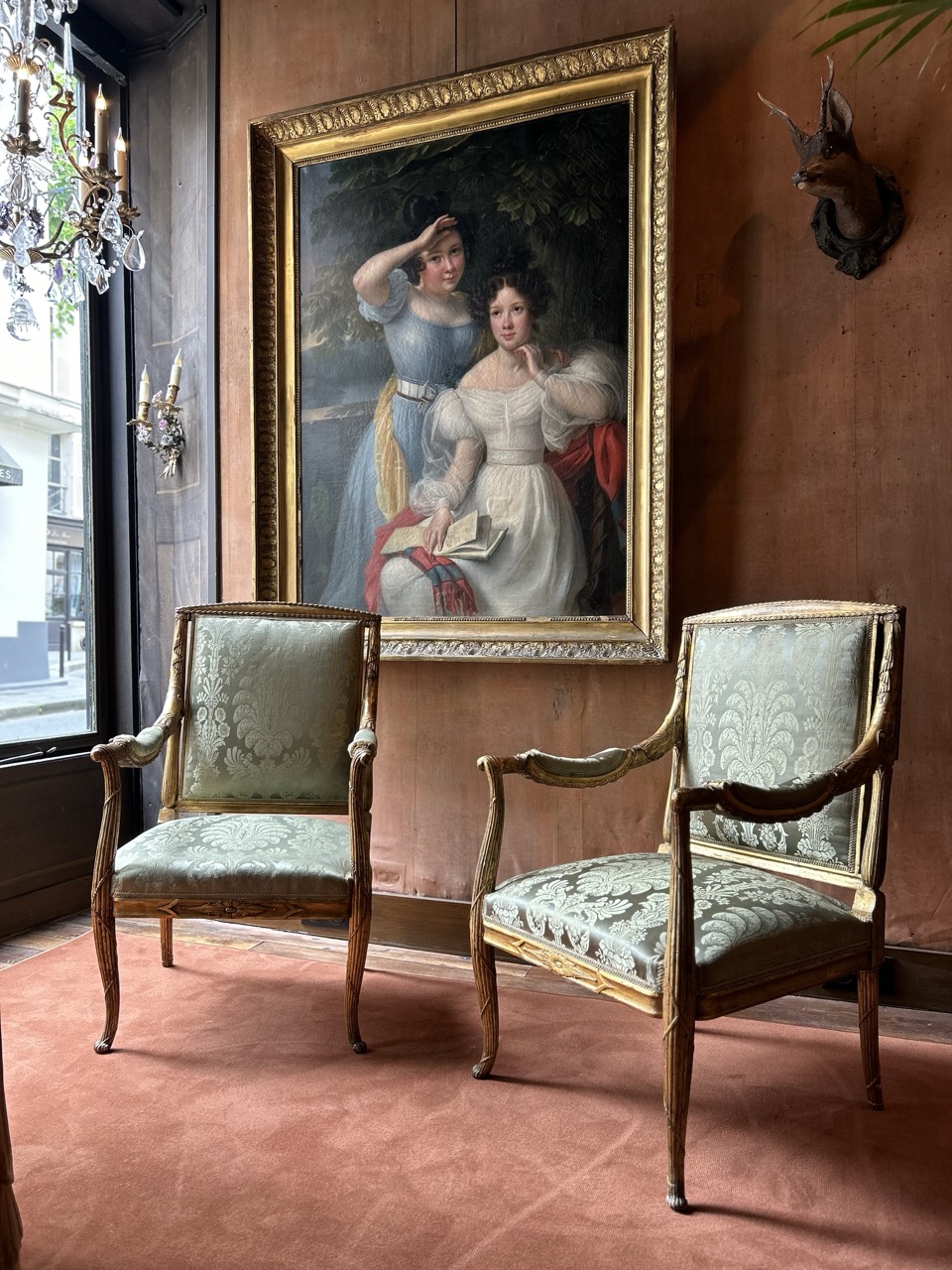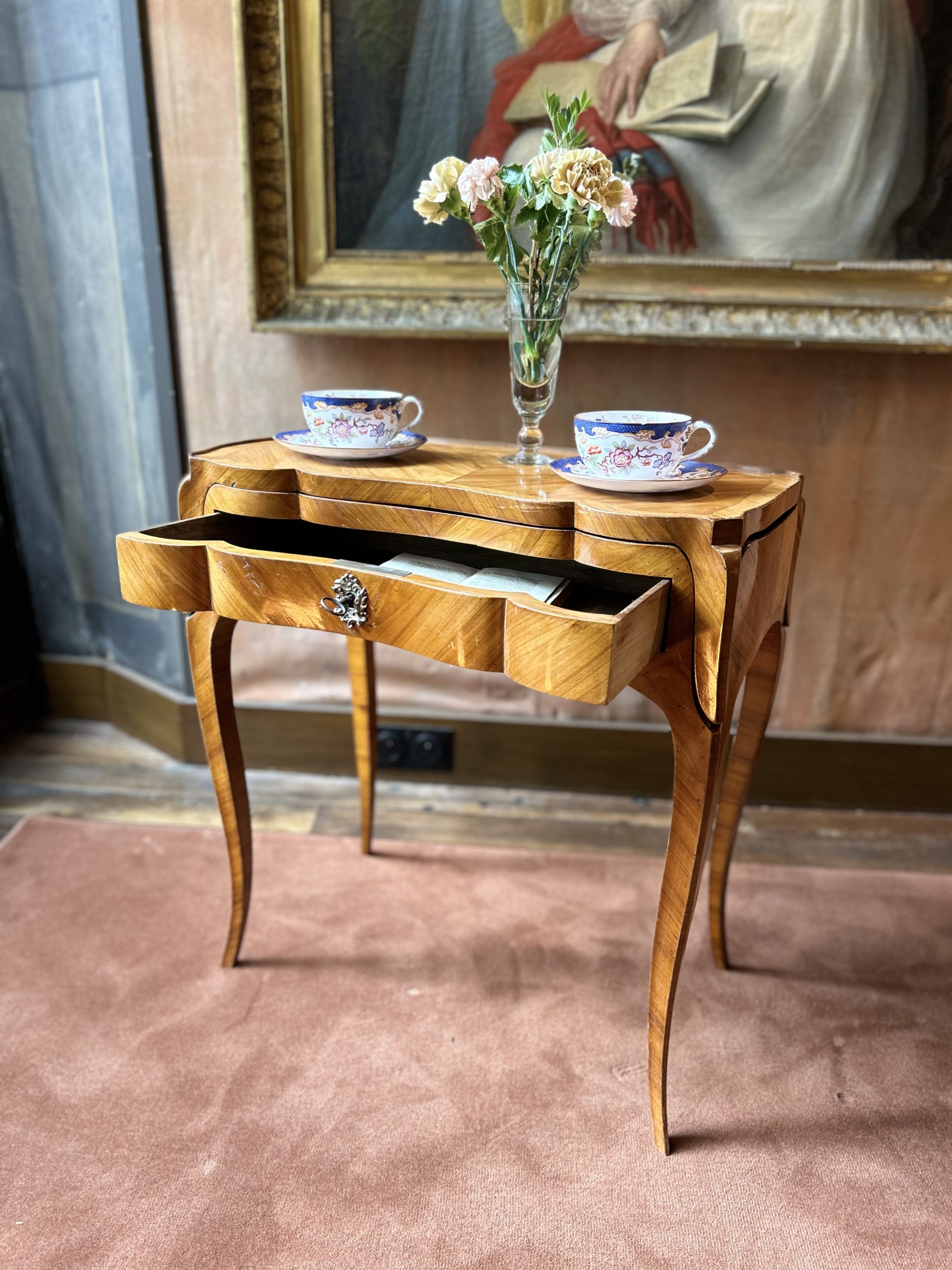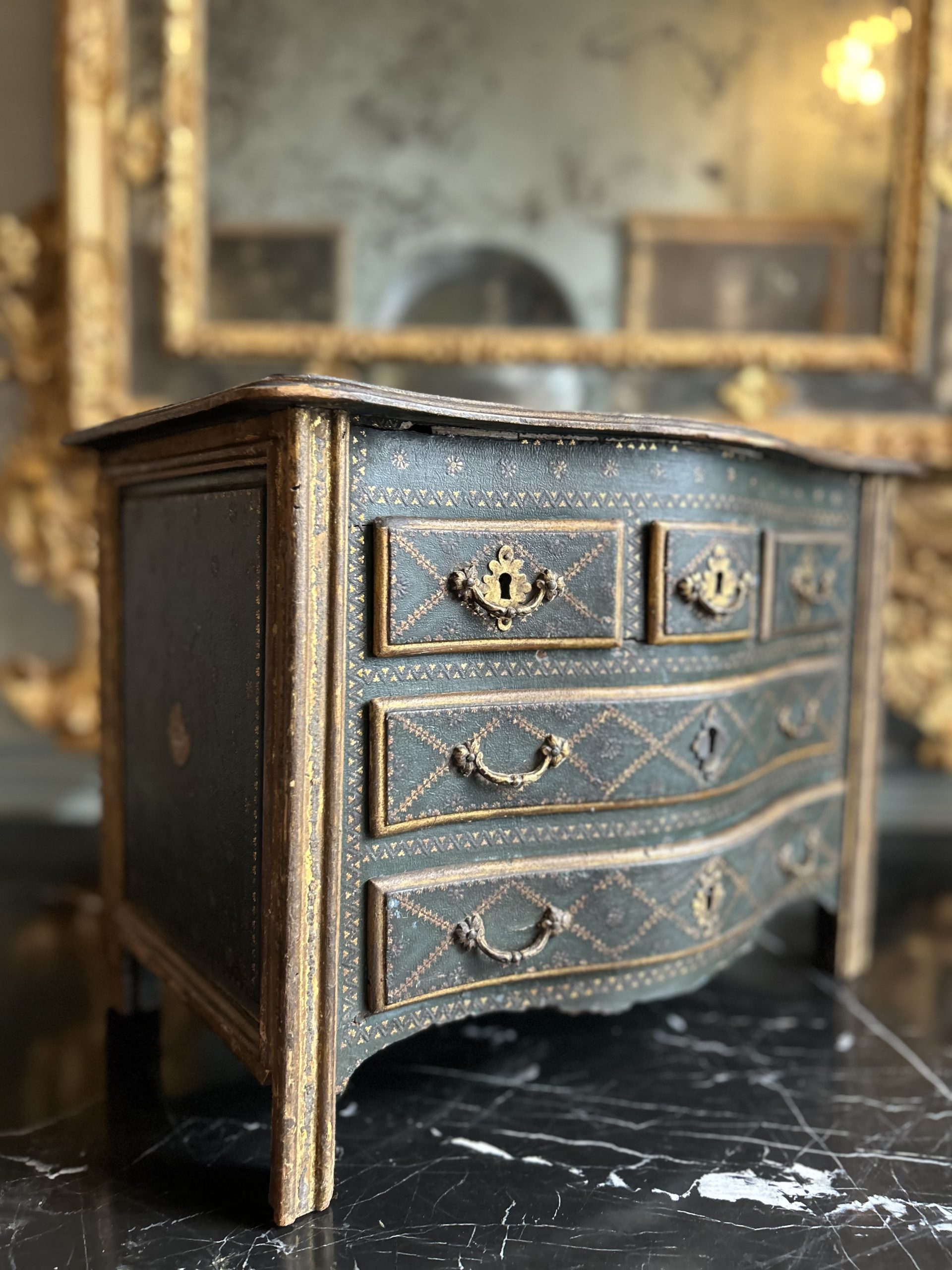Lacquered coffee table decorated with a motif inspired by Chinoiserie, slightly curved legs. In 1601, at the dawn of the 17th century, the missionary Matteo Ricci became the first European to access the court of the Emperor of China. His stories and those of his companions revived the myth of the Chinese Empire in Europe. The East India Company begins trading to export tea, silk and porcelain, the most expensive goods. The sailors also brought back many objects of curiosity, thus revealing Chinese lacquerware to the European public. From the beginning of the century, Chinese objects conquered an audience of wealthy collectors. The inventory of Cardinal Mazarin’s furniture, established in 1653, details pieces of furniture, brocades and silks in Chinese taste. In Canton, they are also starting to export special creations for the European market, with exaggerated ornament, corresponding to Baroque taste and which would pass for vulgar in China. Soon, Louis Napoleon III style places great importance on ornamentation. It is careful, abundant, sought after and of high quality. It is a composite style par excellence, it takes up the ornamentation developed under previous styles.
The Napoleon 3 tables and pedestal tables are made of mahogany, amaranth or blackened pear wood. They can be round or oval with the scalloped or fiddled edge. Inlays of mother-of-pearl, horns or ivory are common, as are painted flower, fruit or Chinese motifs.
Napoleon III period, 19th century
France
Width: 75cm
Depth: 66 cm
Height: 43cm
